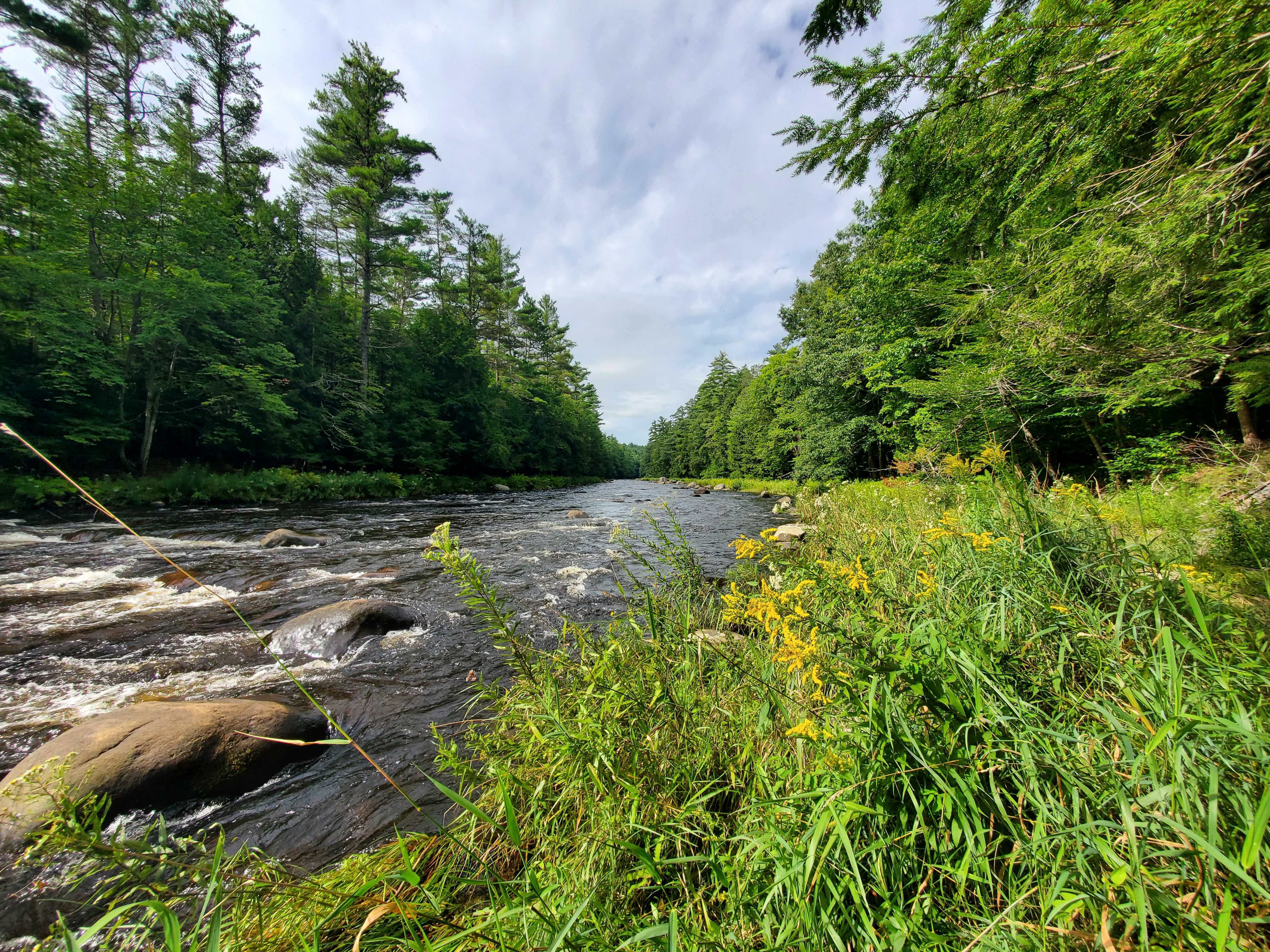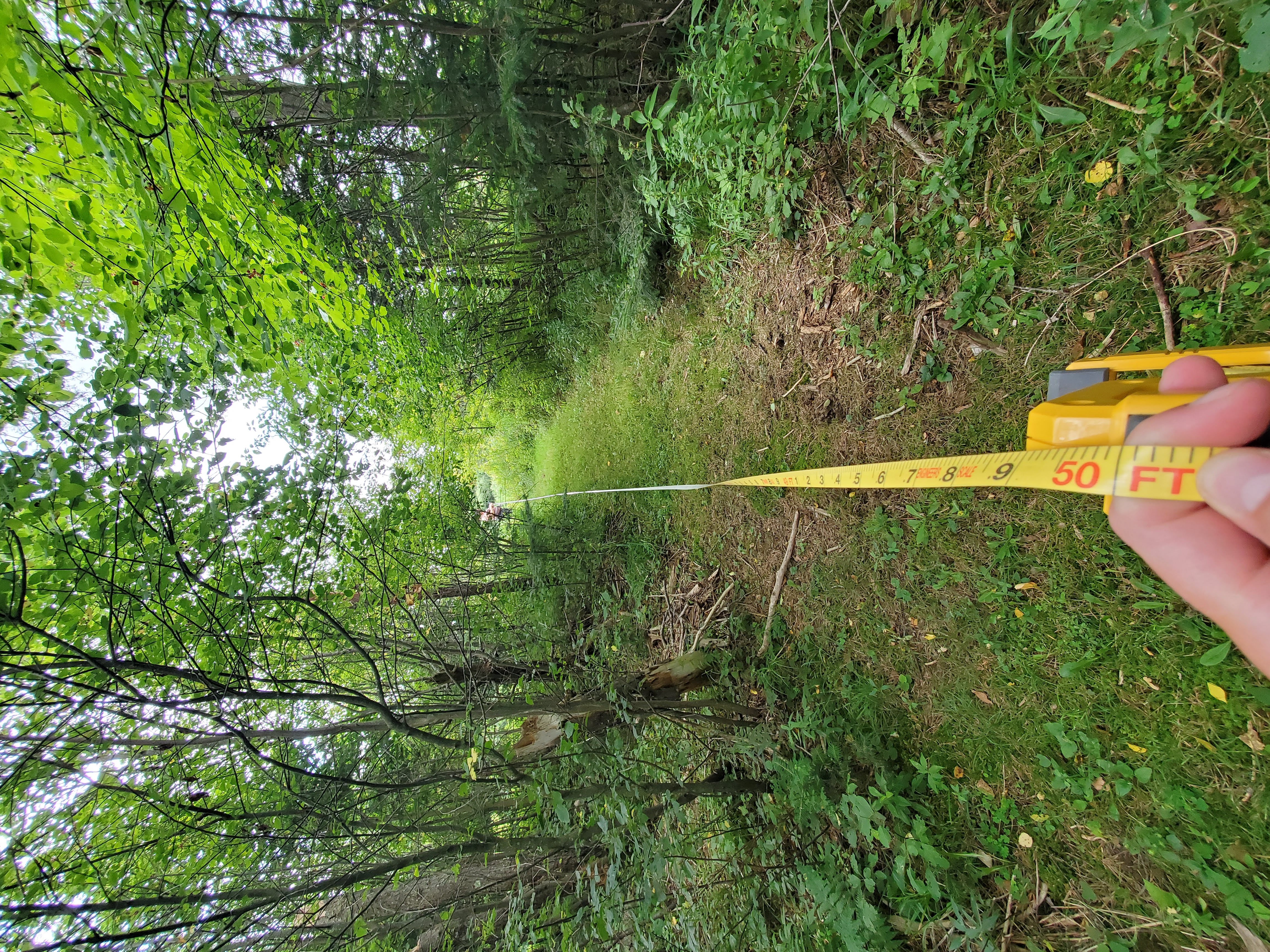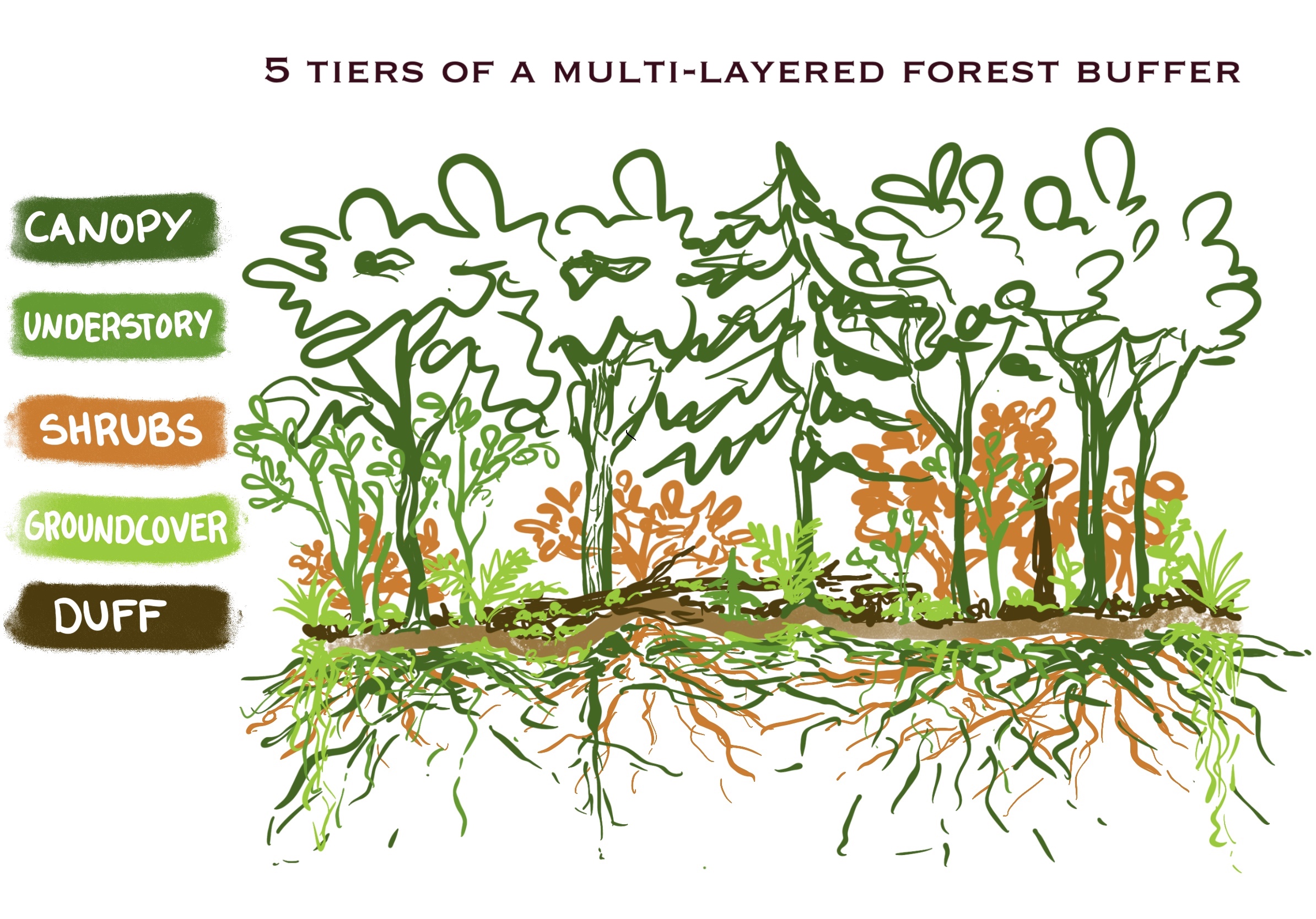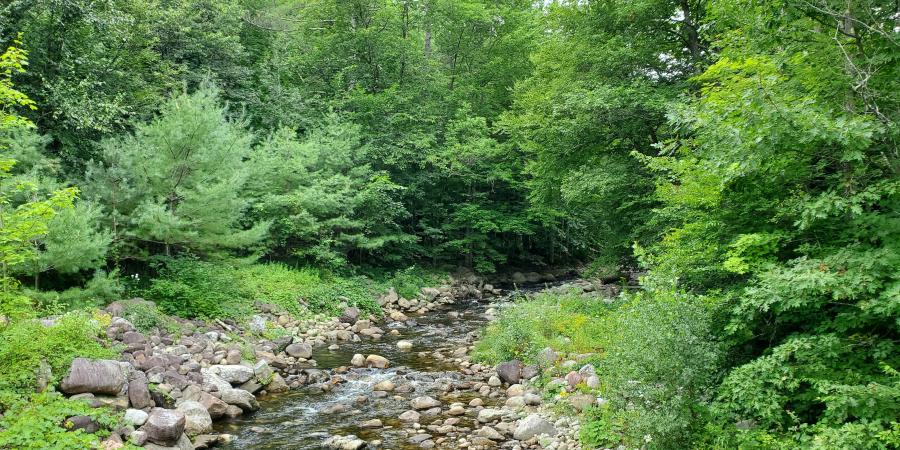One of the biggest influences on the health of a stream or river is the vegetation on its banks. The strip of vegetation along a waterbody is called a riparian (meaning streamside) buffer. Buffers play numerous important roles for the river, wildlife, and human communities.
A healthy streamside buffer stabilizes banks, which minimizes erosion (and property loss) and sedimentation in the river. While these are natural processes, too much sedimentation can smother benthic habitats that are home to important species including macroinvertebrates, a primary food source for many fish species. This same buffer acts to shade the stream, helping to keep water temperatures cool enough for aquatic life. Without this important shade, water temperatures can become too hot during summer for species such as trout to survive. Terrestrial species benefit from riparian buffers too. Streamside vegetation provides critical habitat to many bird and wildlife species that rely on the river as a source of water and food.

A healthy, robust riparian buffer along the East Branch Ausable River.
The benefits to fish, birds, and wildlife may be more apparent, but the advantages of riparian buffers to human communities are just as great. The vegetation in a buffer filters water from rain and overland flow, keeping the water in our rivers clean and safe. This is important to aquatic life but also to people who use the river recreationally. Perhaps the most important way a riparian buffer affects riverside communities is in its ability to reduce flooding. A buffer does this by intercepting and storing rainwater and overland flow so it goes into groundwater rather than right into the stream. It will eventually end up in the stream, but the vegetation slows this process, so it enters the stream flow over time rather than all at once. While riparian buffers are vital to the health of streams and communities, they are often lacking in developed areas.
In the Ausable River watershed, human communities and much of our development is focused along the river and its tributaries. In many cases, the river’s buffer and floodplain zone has been neglected or broken up by development. This development looks different across the watershed. Sometimes it is in the form of roads and buildings built along the river; other times it is a lawn that is mowed up to the river’s edge or trees that are cut to provide a view. Inadvertently, we have caused harm to the river we love and threatened the communities we are a part of by disrupting the river’s buffer. But this is something that can be improved over time. Because much of the river corridor is on private property, it is important that we all work to become stewards of the river and its watershed.
Being a stream steward can involve many different practices: washing boats, waders and other gear between bodies of water, picking up trash in and along the river, planting only native species in gardens, using fertilizers properly, and, for streamside landowners, conserving or restoring the riparian buffer. The idea of restoring a buffer may seem daunting at first, but there are many small steps that, taken together, will accumulate to have a larger effect. Likewise, connecting robust buffers from property to property will create a stronger, more effective buffer and a healthier and more stable river.
Support our biodiverse habitats work for wildlife and their habitats. Give with confidence today!
Here are a few things we can do to help restore and conserve streamside buffers...
Widen the vegetated buffer area
To start, this may simply mean mowing a smaller area and letting the buffer naturally revegetate. To boost this effort, native plants, shrubs, and trees can be planted. Whenever planting, it is important to choose species that are appropriate and native to the area.

Stream Wise recommends having a minimum of a 50ft buffer on a stream. The wider the buffer is the better it can protect the stream or river.
Do not disturb buffer vegetation
While it may be enticing to “clean up” the buffer by raking up leaves and twigs or cutting up and removing downed trees, these provide an important source of nutrients and help build nutrient-rich soil. They also provide wildlife habitat. It is best to leave these things where they lie.
Plant diverse multi-layered native vegetation
The type of environment will determine the species and the vegetation layers that are appropriate for each buffer area. Buffers are most effective when all five tiers of vegetation are present: canopy, understory, shrubs, groundcover, and duff. Some exceptions include hemlock forests that have few shrubs or groundcover and wetland areas that often lack a canopy. When possible, it is preferable to source plants locally, as those adapted to the local climate are more likely to thrive.

Each layer of vegetation within a buffer works to protect the river in a different way. A buffer is most effective when all tiers are present and working together. Graphic provided by Stream Wise.
Remove or contain invasive plant species
Invasive species outcompete native species, do not stabilize banks as effectively, and do not provide habitat or food that is as beneficial to wildlife. Working to remove invasive species from the buffer zone can help the native species thrive and the buffer do its job more effectively.
Maintain a view and timber resources while protecting vegetation
To get a view and still protect the buffer, limb up trees instead of cutting them down. When cutting trees for firewood, cut selectively and make sure you are more than 15 feet from
the stream.
Minimize and plan for pathways
Access to the river is one of the benefits of owning streamside property, but wise access is crucial. Prevent erosion and gully formation caused by straight paths by making paths that run across contour (i.e., switchbacks), are made of permeable materials, and use water bars (which function as gutters) to divert water runoff. Keep paths as narrow as possible.
Capture and soak water runoff within the buffer into the ground
Make sure all water runoff from lawns, decks, patios, and other impermeable or semi-impermeable surfaces within the buffer is directed to vegetated areas that can disperse, slow down, and absorb the excess water. The vegetation will act to filter the water before in enters the stream or river, keeping water clean.
Convert all channelized water runoff from upland areas to dispersed sheet flows
Water coming from outside the buffer should be converted into sheet flow rather than a concentrated flow before it enters the buffer to protect buffer vegetation and help it work efficiently. Meadow filter strips, vegetated swales, rain gardens, dry wells, infiltration trenches and basins, level spreaders, and other green infrastructure practices can be used to achieve this.

Mowed lawns do not slow down or disperse overland flow as effectively as meadows or other vegetated areas. Adding vegetation to an area where there is a concentrated flow can disperse that flow and help make the buffer's job easier. Graphics provided by Stream Wise.
The Ausable River Association participates in the Lake Champlain Basin Program's Stream Wise initiative as a community partner. We work with landowners within the Ausable River and Boquet River watersheds to assess their streamside buffer and provide recommendations and insight on how to protect and improve these riparian areas and keep our waterways clean and stable. If you've got a stream on your property and are interested in learning more about this program, visit our Stream Wise page.
Story by Liz Metzger, Research Associate.
Sign-up for our e-newsletter to get weekly updates on the latest stories from the Ausable River Association.


